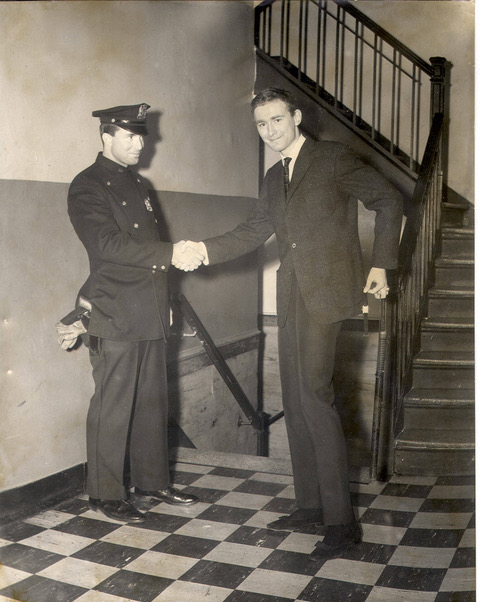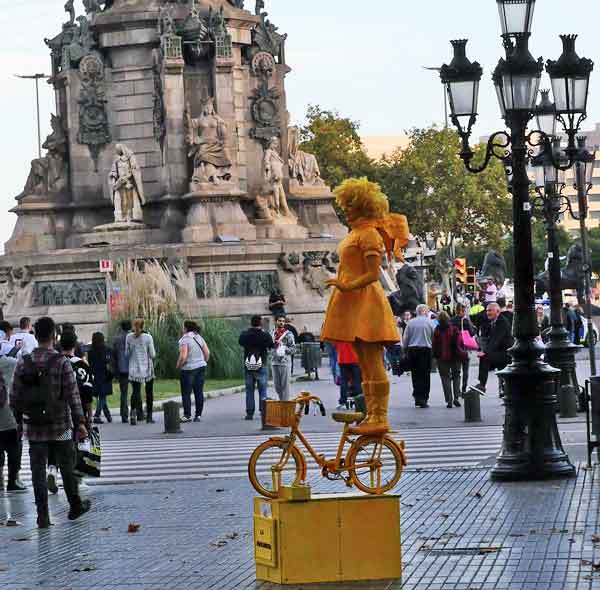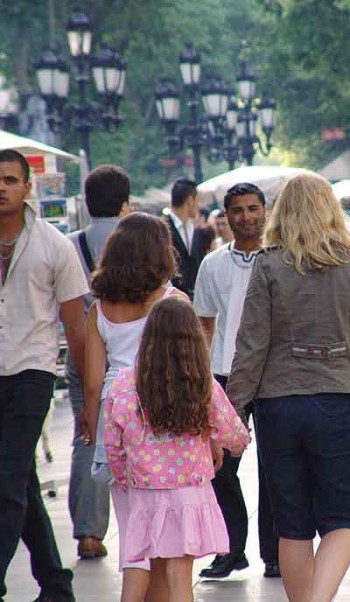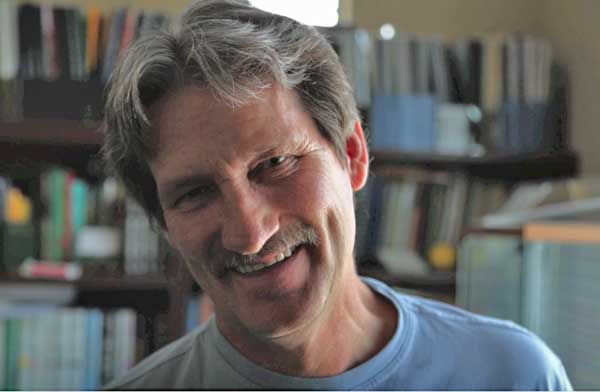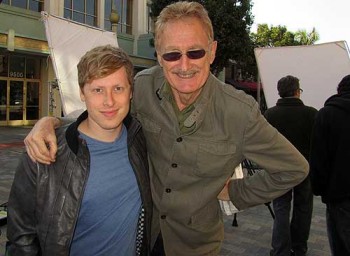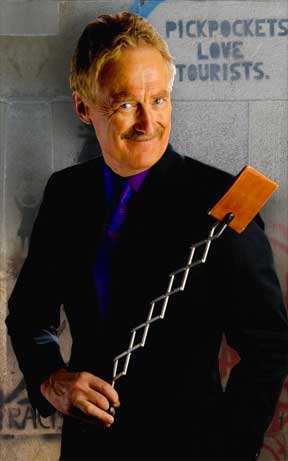I still feel my choice to become an American many years ago was the correct one.
Continue readingOn the Jordan Harbinger show, Bob Arno, Professor of Pickpocketry, talks about… everything!
Listen to the latest Bob Arno interview on the Jordan Harbinger Show. This is part 1 of 2. Part 2 is below.
https://jordanharbinger.com/530

Bob Arno is a comedy pickpocket and criminologist specializing in global street crime, is the co-author of Travel Advisory: How to Avoid Thefts, Cons, and Street Scams While Traveling, and was featured in National Geographic’s Pickpocket King documentary. [This is part one of a two-part episode. Stay tuned for part two later this week!]
What We Discuss with Bob Arno:
- How Bob, the son of a judge, got involved in social engineering and pickpocketing for the purpose of entertainment.
- Why pickpockets are commonly targeted by terrorist organizations for radicalization efforts.
- How diversionary crime like pickpocketing has changed just like every other profession during the COVID-19 pandemic.
- How Bob is able to get close to real-life criminal pickpockets and learn their tricks of the trade without winding up in the hospital — or worse.
- The psychology of a pickpocket — what they’re looking for in an ideal victim and what you can do to ensure you’re not that victim.
- And much more…
https://www.jordanharbinger.com/bob-arno-schooled-by-the-professor-of-pickpocketry-part-one/
Part 2:

See Bob Arno steal from Steve Harvey

“I’d love you to be my partner in crime, Mr. Harvey.”
“Hell, yes!” Steve Harvey eagerly replied, “I’ve been wanting to do this my whole life!”
See Bob Arno steal from Steve Harvey on Little Big Shots Forever Young, which aired July 19, 2017. [Wait a sec—video may be slow to load.]
Barcelona pickpocket scene today

In my previous post, I offered seven simple rules to save yourself from pickpockets, inspired by my research into the Barcelona pickpocket scene today. Although they are presented with Barcelona in mind, the rules are good practice for most travel to areas unfamiliar to you, or when visiting areas known for pickpocket action.
You can avoid almost all of the most common pickpocketing methods if you follow those seven rules. Remember, the thieves read you and go for the least aware. They’ll head for the easiest opportunities. Don’t make yourself easy picking. It’s easy to defeat these pickpockets. The locals do.
In late October 2015, I spent several days updating our knowledge of the Barcelona pickpocket scene today. As I recently noted, our research is tedious and methodical. Here, I will present a few key findings from my research.
Barcelona pickpocket scene today

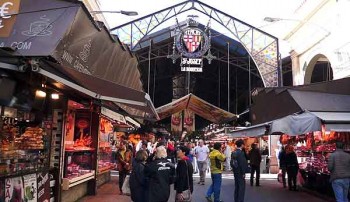
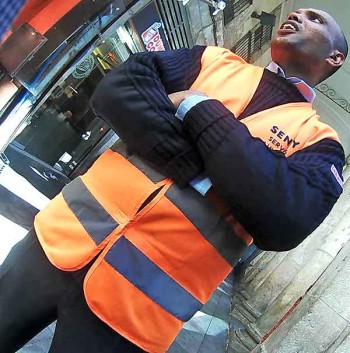
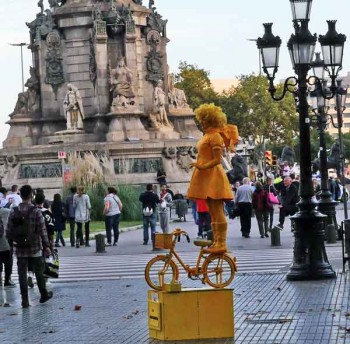
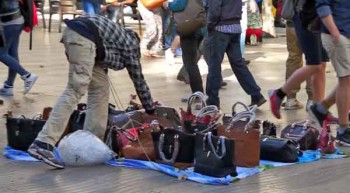
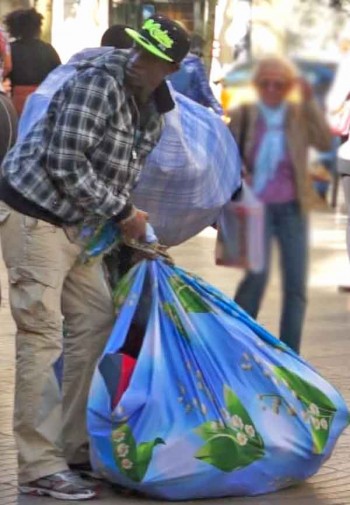
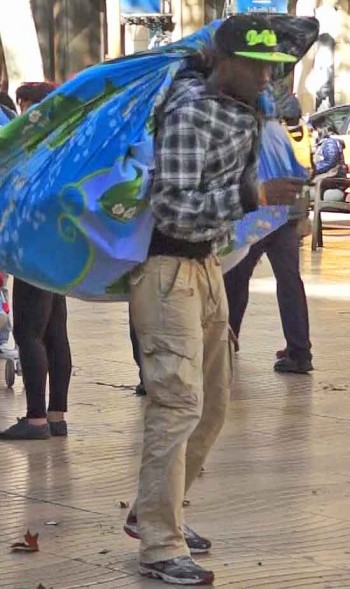
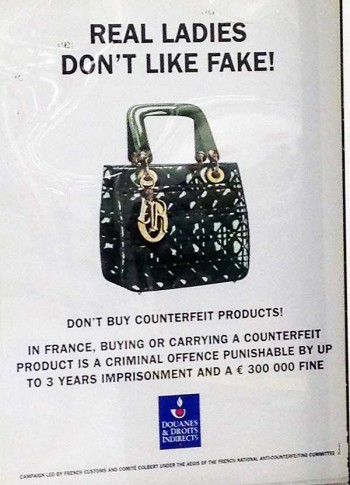

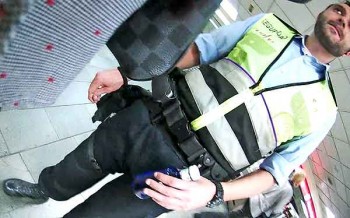
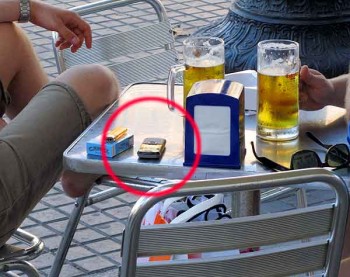
Police intelligence
I had several conversations with the local police. This is always tricky in Barcelona. Language barriers, rules from above to be tight-lipped, and to what extent they even know the average daily incident rate. We know that the real number of thefts is at least three times higher than the official one, since only one in three (at best) will bother to go to a police station and file an official report. The (vast) majority of victims chalk it up to a bad experience or a good lesson. C’est la vie.
Theft numbers are slightly down compared to years past. This is something I can confirm from chats I had with many hotel front office staff, restaurant managers, and people who work in areas where we’ve seen plenty of pickpocket action in the past. What my police friends could not explain was the reason for the downturn. It appears that the number of plainclothes (undercover) officers out in the field is the same as before. One good guess is that the majority of tourists now know before they arrive to be alert. Word is out. People are therefore more cautious.
Sexy pickpockets
But there was also some negative news. I was told that there are 50-100 female prostitutes operating in Barcelona who are more pickpocket than partner to lonely men. I thought this development was a bit peculiar, but I can see how the majority of these victims would not rush to the nearest police station to report a robbery. With this little nugget I began my own research. No, I didn’t hire a pro to get the goods (on camera), but I did strike up conversations with women who would know, including a few who did proposition me in the evening on La Rambla. One told me: “A third of the girls are simply doing tricks, and a third turn tricks and do pickpocketing. The final third are ladyboys who do only pickpocketing.”
There are a number of streets and regions in Barcelona where this action is rampant. And the women (and men) are extremely aggressive. Watch out!
Markets
My next stop was La Boquería, the hugely popular market just off La Rambla, full of fabulous small food stalls with exquisite Catalonian fruits, nuts, Iberian hams, chocolate, fresh seafood, flowers, and temptations galore for food lovers. The market is always crowded and always fun to stroll through at any time of the day.
And yes, there is pickpocketing there. But not as much as one would think. The market is concerned with security and its reputation and therefore hires guards. But not every entrance is controlled and the thieves know the weaknesses of the system and camera positions. Various stall owners or managers told me about the frequency of the thieves and when it is most likely to have an encounter with them: Friday or Saturday, paydays with many customers carrying cash, and especially crowded. My additional suspicion: maybe slightly less police presence on Saturday. Most thefts are from women’s handbags or from older people less alert to their surroundings and their pockets.
Ronaldinho technique
I also saw some of the classic pickpocketing moves late in the evening right on La Rambla, which otherwise is fairly safe since it’s constantly patrolled by officers in uniform (far more than in the past). Around 11 PM I saw the old Ronaldinho football stunt tried on a man in his twenties, maybe slightly tipsy, but the mark realized what was going on and just barely escaped the attack. In years past I would recognize various pickpocket teams crossing La Rambla late in the evening, but this time I saw no evidence of these punks. The bar scene is where one has to be most vigilant nowadays in Barcelona, and when taking the underground Metro.
The bottom of La Rambla still has the living statue performers, but only on the first two hundred meters or so. There was no evidence of the “three-shell gamers” who have otherwise infested La Rambla. Clearly an improvement and a clean-up process. The crowds that always form quickly around these con men are ripe pickings for the pickpockets.
Counterfeit-sellers
In their place Barcelona and especially La Rambla has been invaded by replica hustlers, small teams of men from West Africa who sell counterfeit handbags, fake brand name clothes and sport shoes, laid out on sheets spread on the ground. Of course all of Europe is plagued with this phenomenon, and wonders how to deal with it. It is illegal. If one approaches this from an elitist viewpoint it is trashy, cheap, and blocks pedestrian passage on otherwise nice streets. From a different angle, one can say these immigrants are trying to survive with a trade and it seems that buyers are eager and willing to find bargains on name brand luxury goods, whether legitimate or copy.
However it is illegal and in some countries, foremost among them France, authorities take a very serious stance on anyone buying or possessing counterfeit products. And so the hustle continues—a cat and mouse game in which the police sweep down on the culprits and the hustlers pull strings attached to the corners of their display sheets, instantly morphing the spread into a huge swag bag containing all their contraband, slung on their backs as they dash off. These gangs have controllers or spotters who alert them that the police are approaching, just as the three-shell-game hustlers also have spotters looking out for uniformed or undercover police officers.
The replica game is huge business all over the world, but a very difficult trade to block or efficiently remove. Some locales have enormous illegal black-market replica industries; for example Italy (Naples), Turkey) (Kusadasi & Istanbul, Malaysia (Johor Bahru), Thailand (Bangkok), Vietnam and of course the major cities in China. It is especially difficult to prosecute—what really is a replica, and what is not?
Metro
I then took a few trips on the local Metro from Plaza Catalonia and witnessed first hand a few female pickpockets. They seemed to recognize me after a while, probably from the film Pickpocket King which now must have been screened by every practicing pickpocket in Europe. They did not recognize me instantly; how could they? The film is now two years old and I was doing my rounds alone in Barcelona, not accompanied by Bambi. When they left the compartment where I stood their heads did their usual tilting down, and turning while scrutinizing a male mark as he entered the Metro train. They simply could not turn off their modus operandi, looking for the next victim, and obviously tabulating their chances of going into the man’s pocket. Both females showed all the characteristic behavior, including giving me the finger once the doors to the train closed and they were on the outside. Yes, taunting me, and giving me a message: “we’re on to you, and we know what you’re up to.”
Mobile phone theft
A continuing trend, despite of Apple’s security features and the ability to block future use, is Apple-picking, the slang term for stealing mobile phones. This has grown to be a serious issue all over the world.
Smart phones, and of course especially the coveted iPhones, are a prime target for the pickpockets roaming the streets of Barcelona. Mild temperatures make outdoor restaurants popular nearly year-round and tourists at these venues let their guards down, allowing their expensive iPhones to sit in full view on tables within easy reach for any grab-and-run thief. Many factors make phones easy to steal; they’re slim; they’re usually at the top of women’s handbags for quick access, or in outside jacket pockets where a thief can easily snag them. While a wallet may be secured in a hip pocket with a button, a multi-functioning smart phone is kept easily accessible. All these little details make for uncomplicated extraction even by low-end pickpockets.
And the “high-end pickpockets” who specialize in mobile phones are as good as magicians.
Another way to gauge the pickpocketing levels in a city is to learn the number of iPhones stolen daily. It’s fairly easy to acquire this info by simply chatting with management at the local Apple store. When I visited Barcelona’s Apple store, the daytime manager told me that the average was around 80 new iPhones sold during his eight-hour shift, and of these roughly 30 were replacements of just-stolen phones. Considering those phones not immediately replaced, and additional phones sold on the swing shift, that translates to a guesstimate of at least 50 phones stolen every day in Barcelona (in late autumn). This fits in very nicely with other Barcelona pickpocket statistics and with other high-profile European capitals like London, Rome, and Paris.
Obviously these numbers are not precise. They’re estimates and averages but, as a yardstick for pickpocketing activity, quite useful. This is corroborated by the police, who state that the ratio of victims reporting the loss of phones to wallet is three to one—for every wallet stolen, three phones are grabbed.
When you consider the value of the hardware itself, the data in it (passwords and credit card numbers, addresses, access codes, etc), and the ease of grabbing it, this makes sense. In addition, victims often believe it is a futile waste of time to report a stolen wallet, which is unlikely to ever be found with its contents, vs. an expensive and identifiable mobile phone (with an IMEI or, international mobile equipment identity number), which is seen (hoped!) to have a greater likelihood of being traced and returned. Victims also may need a police report for insurance.
Conclusion
My trip to Barcelona was tied to a security lecture for regular travelers, not security professionals. I was eager to know if some of these visitors had already experienced incidents on their first days in Barcelona. I will not identify the group by name or the actual number of hearsay incidents, other than that the ratio of incidents to total number of visitors was better than in years past. In the past I have noticed an incident rate of roughly ten victims per one thousand visitors, now the numbers were significantly fewer.
In conclusion, although this is not a scientific report, I can say with confidence that the Barcelona pickpocket scene today has improved somewhat in terms of safety. Yes, there are still plenty of pickpockets operating in this charming city, but it seems not much worse than most other large cities in Europe with important attractions. What continues to make Barcelona attractive to the thieves is of course the sheer number of tourists, cheap living, and a weak legal system. The most they have to fear is a fine, rather than a lengthy prison sentence.
I reiterate the importance and success of following my seven simple rules to save yourself from pickpockets.
World’s most famous pickpocket slams ‘blatant’ Barcelona street crime rates
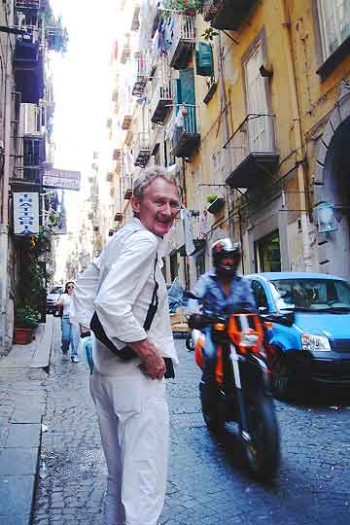
Bob Arno, a security consultant [as well as a comedy stage pickpocket], is the world’s most prominent pickpocket. Speaking to 02B, Arno lifts the lid on the Barcelona street crime scene. According to him, out of a thousand cruise-goers disembarking in Barcelona on any given day, five will be stripped of their belongings.
By Ignasi Jorro in Barcelona, 23/02/2014
Not many former pickpockets pride themselves on having been featured on the frontpage of Time. Bob Arno is one of them. He is often described as “the world’s most famous pickpocket” and praise pours in for his “unrivalled skills”. Bob Arno has snatched his way into the Wall Street Journal, CNN, and New York Times. National Geographic handpicked him for the acclaimed documentary Pickpocket King.
Now a security consultant, Bob Arno has a conference-packed agenda, giving 25 lectures a year on average. The pickpocket-turned-pundit works closely with tourist firms and runs a successful blog on worldwide crime.
02B- When was the last time you visited Barcelona?
Bob Arno- We visit Barcelona every summer, sometimes for a week or so, or several times for a day or two between May and November. The reason for our frequent trips is that we work with various travel companies, like the cruise industry, which brings us to Barcelona.
Bob Arno on Barcelona street crime statistics
02B- How would you describe the “pickpocket scene” (if it can be called so) in that city?
BA- Extremely high, compared with per capita statistics of other tourist cities like Rome, Paris, Copenhagen, and Prague. These other cities also have high pickpocketing rates, but not as varied and blatant as in Barcelona
In my own surveys, I have found that of 1,000 tourists visiting from a cruise ship (for five to eight hours), three to five persons will experience a theft or an attempted theft. Numbers are much lower for the same 1,000 cruise passengers visiting Nice or Athens.
The good news is that lately numbers have come down as to cruise passengers—day visitors who do not stay over night. But young hotel guests, 18-30 years of age, often do not bother to report the theft of a wallet or mobile phone, skewing the numbers.
Bottom line: I would say that the average number of thefts (real losses versus failed attempts) have decreased from over 100 per day, to 50-100 per day.
02B- But, who robs in Barcelona?
BA- Categorizing pickpockets in Barcelona is a complex endeavor. Here is an incomplete list the many players:
• Local gypsy families, who might have arrived many years ago from Kosovo or other war-torn regions, either first or second generation. A decade ago these perpetrators were a serious nuisance in Barcelona and probably constituted over fifty percent of the action. It is far less today.
• North African pickpockets who reside in France (especially in Paris) and make brief trips to Barcelona to practice their trade
• South American pickpockets who reside legally or illegally in Barcelona who specialize in advanced pickpocketing techniques like “la mancha,” the pigeon-poop ploy
• Itinerant pickpockets from Romania. Men and women, often very skillful in their art. Within this group are the pickpockets who specialize in “Apple-picking,” or iPhone-grabbing.
• Occasional well-organized troupes from Poland, skillful and very experienced. They’re a small percentage of the pickpocketing population in Barcelona
You will notice that we have not yet listed any local residents. It appears that over ninety percent of pickpockets in Barcelona are from other parts of Europe (or the world).
02B- How would you describe the response by authorities, including police forces, etc?
BA- I have always wondered why tourism organizations and politicians never combined forces and tackled the crime reputation that Barcelona gradually gained. The city has a very poor reputation that lingers to this day.
02B- In that case, what would you advise them to do to tackle the issue?
BA- I believe with absolute confidence that the police divisions working the Barcelona street crime detail know exactly who the culprits are, and they could quite easily apprehend the majority, and either expel or lock them up.
But it’s not that easy. It’s the judicial system we’re talking about and the expense of sentences. For a start, I would have a long session with the police chiefs and their superiors about morale and attitude toward tourists reporting crime. I’d like to see more compassion from the officers, more detail-oriented report forms, more translators, and a system that measures behavior of police officers who come in contact with tourists. Also needed: an independent commission that looks at all facets of Barcelona street crime, and which then reports back to the political powers.
For example, a pickpocket (in Paris) who has one arrest record, can be apprehended and prosecuted if they behave as if they are going to to steal from a victim.
02B- Which would be the main techniques?
BA- Depending on the nationality of the perpetrator, the techniques vary.
• First and foremost, opportunity theft when a victim does not protect his belongings. For example, she places her handbag on the floor in a restaurant without realizing that the entire bag can be pulled away from below.
• Pickpockets sandwiching victims at door entrances in the metro during rush hours.
• Thieves working clubs and restaurants who especially target the elderly (who are gullible or less mobile), and also the youth (in their late teen years or early twenties) who are still trusting, not yet cynical, and easy to distract. These thieves also work at big club events and concerts.
• The classic “pigeon poop” smear. A gooey mess is applied onto the innocent victim and then, a minute later, the pickpocket approaches the victim and volunteers to help clean it off. In the process, the pickpocket can invade pockets while distracting with cleaning the spot. It is more prevalent in Barcelona than elsewhere.
• Luggage thieves. Tourists arrive at a hotel and unload their bags from a car, leaving a small backpack or laptop case unguarded. While the bags are unattended, thieves speed by on a scooter, snag the laptop case, and speed off.
• Shoulder-surfing, in which the thief watches the cash machine-user from a distance to learn his PIN. The target is then followed until the thief gets (or creates) an opportunity to steal the bank card.
02B- What differences, if any, has the pickpocket community in Barcelona with similar major capitals around the globe?
BA- Most of Barcelona’s pickpockets are opportunists; fewer are very skillful ones. It’s a volume operation at the lower end, because Barcelona is so packed with visitors seven months of the year.
02B- How has the recession affected the pickpocket scene?
BA- Not much. They may have to steal an extra wallet or two to get the money they need.
Pickpocketing is inherent of large crowds, and so is on the type of tourists who visit Barcelona -some gullible, some young. Since Barcelona is such a desirable destination, many visitors are new to travel and naive.
02B- What are your future projects as an expert in this field?
BA- Since my National Geographic film, Pickpocket King, was released two years ago, I am less effective infiltrating or establishing rapport with thieves. But I am able to work closely with many law enforcement agencies across Europe, training and discussing policies. It is my strong belief that the best way to reduce diversion theft is to educate the public and make them aware of the basic techniques of thievery. With a few basic precautionary rules we can reduce this Barcelona street crime by more than half.
Three-card monte expert Rod the Hop, R.I.P.
They’s ony three kinda men I won’t play with: That’s a po’ man, a blind man, an a police-man!
Rod the Hop, my Las Vegas three-card-monte informer, died last month, aged 56. He was a card tosser whose demonstrations proved that drills teach skills for life. He set up in areas with less police presence, favoring the sidewalks outside large factories, especially on payday, “where there’s eight hundred people going to lunch and they have to walk by you,” he said.
“A real good spot is outside military bases, where you’ve got a lot of young, naïve kids with nothing much to do and a little bit of money to spend.
“The moves are easy. You can learn it in a day and be good in a week. It’s the presentation that’s important. You have to have unflinching audacity and unmitigated gall. I don’t get intimidated.”
I love the way Rod spoke.
He was renown as a “card mechanic,” which is a card manipulator, as entertainment and teaching, and/or cheating in card games. As a card mechanic, Rod the Hop worked both ends. He was loved by the worldwide magic community; and had four felony convictions for casino cheating.
He was also renown as a “slot mechanic,” which could mean slot machine repairman but, in Rod’s case, meant he was a convicted slot machine cheat. Just last year he had the honor of becoming person number 34 in Nevada’s Excluded Person List, aka “the Black Book.”
He told us he tore apart and studied slot machines in his apartment, so he had to use a friend’s place as his “official” address so his parole officers wouldn’t find them.
Travelers may encounter three-card monte games anywhere. Players are purposely given a glimpse of the target early in the scramble, a skillful slip is performed by the tosser, and players thereafter carefully track the wrong object with confidence.
I’ve called three-card monte a “game” but, like the three-shell game, they’re games of no chance: tricks and traps. You’ll see other players win and walk away, but they are, in fact, shills. You cannot win. If you win once, it’s at the tosser’s pleasure in hope you, or someone in his audience, will bet big.
Advice from a three-card monte expert
In the words of Rod the Hop
The object of three-card monte is to make money. Each person in the crew gets an equal end. Some days it’s good and—it’s a street game so obviously you can only make as much money as what a person has in their pocket. But if you make two or three hundred dollars apiece a day, then you’ve done what you set out to do. Most of it has to do with grift sense, and your con and your presentation. That’s more than the skill factor, I would say.
It’s just a hustle. I mean, you just do the best you can and you prey on tourists or suckers that don’t know they’re breathing air.
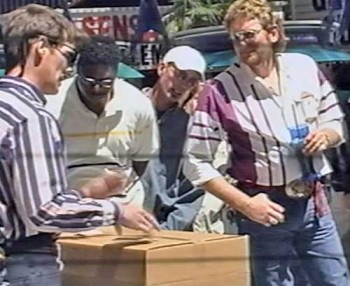
What I look for in a sucker is, they’ve got money, number one. And that they’re a sucker. I don’t have a conscious thought pattern that goes through my mind when I see a sucker. I know a sucker when I see one. I just do. I’ve been doing it so long, I know a candy bar when I see one. That’s all there is to it.
But by the same token, I know someone that’s not a sucker, or might be a cop, or somebody that knows the game. I can just feel it. I just know a sucker when I see one and my crew does too. You know that when you pick a crew. I don’t go out and say, yeah, he looks like a pretty good thief and has a lot of grift sense, I’ll get him. The deciding factor whether you have a good crew or a bad crew is how much grift sense all your partners have. But most of the time you’re not going to hook up with someone that doesn’t have grift sense.
You’ll find the game in the back of buses, train stations, things like that. Very seldom do you see it in the streets, cause if it’s windy it’ll blow the cards open.
I used to go outside a factory. Believe it or not, all you have to do is set up a box and start throwing cards and people will just stop by to see what you’re doing. You don’t have to say anything. Then you start betting with the shills. And pretty soon people get to realize that it’s a betting game. I’ll keep throwing it, and my shills will be betting, and they’ll be winning and the sucker sees them winning, and so they want to bet. And I might even let the sucker win some if I see other suckers that might have more money.
So, the red card’s on the bottom of the two cards and the black card’s on top. When I throw the cards down, I’ll throw the top card instead of the bottom card, which is the red card. But first, just to get into the rhythm of it, I’ll do it for real. I’ll throw the red card on the bottom, and let them watch where it is, very slowly, and they’re watching and wondering where the red card is. And there’s no question where the red card is.
And they’ll want to bet, so I’ll say, well here, let me do it again. And then I’ll pick them up and they’ll say, oh gosh, I was right. I knew where the red card was. And then I’ll do it again, and now they’ll want to bet. When I don’t want them to win is when I’ll throw the top cards. And then obviously they’ll lose.
You would think that a normal person would think, wait a minute, I knew where the red card was. I bet on it and I lost. Why? Well you’d think a guy would just quit. But no, not suckers. Suckers go, ‘wait, this time I’m really going to watch him.’ And then they’ll bet more money, and it just goes on and on until they don’t have any more money. So I try to entice as many suckers as I can to bet on it. Then, when everybody’s out of money, I take the cards, stick them in my pocket, and walk away. And then we’ll go somewhere else.
I’m where there’s people. Where there’s people there’s money, and where there’s money there’s me. And that’s where you do con games. You can’t do it if there’s no customers. Where there’s people, there’s suckers, and where there’s suckers, there’s people like me.
The reason people try to beat this game is because of the skill of the operator. It’s my presentation. I say, ‘look, I want to show you something.’ First off, I say ‘this isn’t three-card monte.’ Because then you’re thinking, this is not three-card monte. I tell them that you win on the red and you lose on the black. Now watch. Here’s a red card. I’m just going to set it right there. Then here’s a black card and I want to set it right there, and just switch them. Now where’s the red card? Will you bet on something like that? Well sure you would, if you were a betting man. But if you’re not a betting man, you’re not going to do it.
And this is a cliché that everyone uses, that you can’t beat an honest man. Well, you can’t beat someone that’s not trying to win your money. You can remember that. As a hustler, and doing the three-card monte, I cannot get my money from someone that’s not trying to get my money first.
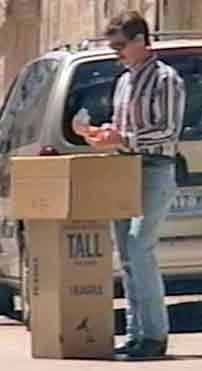
This is a real old game, this three-card monte. I know it’s at least a hundred years old. It’s in a book a hundred years old, published in 1902. But each generation that’s never seen it before thinks they can beat it. There will always be suckers.
Look, three-card monte is a great little hustle in the street. And frankly, I don’t do it any more because there’s not enough money in it for me. It’s only as good as how much money a person has in their pocket at that time—right now. How many people walk around nowadays with eight hundred dollars in their pocket, or a thousand? Or even three hundred? You know what they got? They got about six dollars and fourteen credit cards. That’s what people have nowadays. They don’t carry around cash. The only people that carry cash nowadays are criminals.
The one good thing about three-card monte and the three-shell game and the short cons like that, is it’s a good training ground for con men, for grifters. It’s a prep school, if you will. Most people grow out of it.
If you’re a tourist and you see a three-card monte, don’t stop and look at it and think, well I know that he throws the top one sometimes and maybe sometimes he throws the bottom one, or whatever. I’m telling you right now. Do not play it. Cause it’s a guarantee, you cannot win. It’s simple as that. And that’s my advice. I can promise you, you cannot beat it. Just go on down the road when you see it.
Like Rod the Hop, Bob Arno, the famous pickpocket, is also known in and has deep knowledge of the worlds of magic and crime. Watching Rod work, Bob was impressed with his coolness, his social-engineering, his roping-in of “suckers.”
I was impressed with his patter. Here are a few of his lines, usually delivered in a rapid-fire drawl while his hands were flying and his mind was sizing up potential marks:
“This here ain’t no three card monte, this here’s the Mexican pitti-pat, where you win on the red and you lose on the black…
“Watch me now, I’m gonna race ’em and chase ’em, so watch where I place ’em…”
“If you gotta lotta nerve and you gotta lotta plenty, five’ll getcha ten and ten’ll getcha twenty…”
“I’ve played this game with Yankees and Southerners, Senators and Governors. Money on the card or no bet, where’s the red? If I can bluff you I can beat you. Come on bet five, bet ten! Ho down now, get your chicken dinner in the center, where’s the red?…”
[Thanks to Paul Chosse, who thought to put these lines in writing back in 2005.]
Rest in peace, Roderick William Dee.
Adapted from Travel Advisory: How to Avoid Thefts, Cons, and Street Scams
Chapter Eight: Con Artists and Their Games of No Chance
Bob Arno pickpocketed in Bali—video
What kind of monkey business is going on when the thief rejects cash and throws bills taken from the pocket onto the ground? Watch the video!
The backstory: a monkey in Bali, Indonesia, attacked Bob, unprovoked. It leapt onto Bob’s leg and dug though his pants pocket. Finding only a crumpled tissue, which it threw to the ground, it scampered up onto Bob’s shoulder and began rifling his shoulder bag.
That gave us an idea. We thought about what pickpockets around the world have told us: they look for “the print of the money.” That is, how the shape of a wallet or credit card shows itself through the pocket fabric, how a jacket hangs heavier on one side when there’s a fat wallet in one pocket, how a pocket bulges.
So we returned to the monkeys with five bananas. We put a banana in Bob’s pocket with cash on top. A monkey spotted “the print of the goodies” immediately and went for it, tossing the cash to the ground, digging out the banana, then sitting down a safe distance away for a gobbled feast.
We repeated this four more times in different areas, and each monkey’s behavior was the same. One almost tore Bob’s pants. Another bit through the fabric in its haste.
Bob’s pockets have hosted many thieves’ hands. As thiefhunters looking for pickpockets we use the exact same technique. We place the bait deep in a pocket—tempting, but not too obvious or easy to get. Then we stroll among thieves with antennas up, nerve-endings fine-tuned, and cameras rolling.
Bob Arno on pattern recognition in thievery
When gearing up for a heist, thieves try to look relaxed and natural, but fail. In this, they send signals that trained security personnel can pick up. Still, business travelers are targeted by “breakfast thieves” in hotel lobbies and buffet areas.
Hear more on risk management in Bob Arno’s interview on Israeli Radio’s Goldstein on Gelt:
Framed and accused of theft
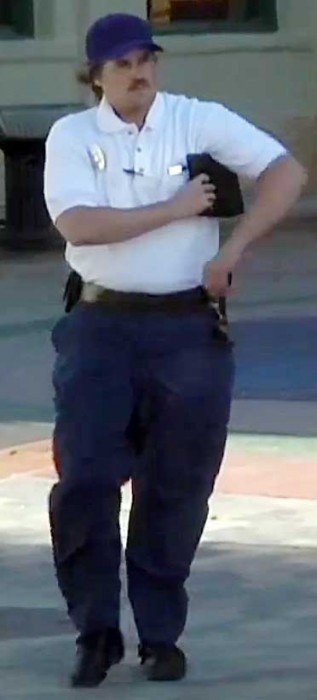
In what could be called a social experiment, it is proven that a man in a police-like uniform has great power and ordinary citizens are easily bamboozled into idiotic obedience. When the intent is robbery, pseudo-cops usually rely on flashing a fake badge; compliant victims then hand over their wallets.
In the following cases, “pseudo-cops” detain and accuse innocent passersby of theft. Watch the accused squirm under interrogation and threats; remarkably, they never question the legitimacy of the uniformed authority.
Bob Arno, preeminent pickpocket, was asked to help make a commercial for Toshiba and Intel. The idea was to slip the company’s new laptop into the bags of unsuspecting people as they strolled through Culver City, California. The laptop, called “UltraBook,” is so thin and light, the company believed that no one would even notice.
Preposterous! It turned out to be a challenging assignment.
Bob roped in the talented and adorable magician Ben Seidman and together, the two deceivers rehearsed the teamwork and choreography necessary to “put-pocket” the computer.
Now, a computer, no matter how light, is a noticeable weight factor when added to a tote someone is carrying. And it is of a size that is difficult to slip in, between straps, handles, zippers, and buckles. It took some doing to distract the victim and mask the PLUNK! of the extra weight dropping in.
In practice, the two sneaks were more than successful. After brief, seemingly innocent encounters, more than a dozen unsuspecting victims wandered the streets unknowingly toting a Toshiba UltraBook.

Each victim was then questioned by a “security guard” about a laptop which had supposedly been reported stolen. After a polite request to search the victim’s bag, the shocking discovery of the “stolen” laptop, and the victim’s protestations of innocence, the pseudo-cop became rude, belligerent, and provocative.
“For a criminal, you’ve got excellent taste,” the security guard said while admiring the laptop.
“You’re going to jail, missy!” the bad cop threatened one poor victim.
“Your fingerprints are all over it,” the guard told another victim after making him feel the weight of the laptop.
“But you told me to hold it!” the vic protested.
“We have no record of that,” the guard said.
To victim Claudia the guard says “You have great taste in stealing products.”
“Thank you,” Claudia replies, stunned almost speechless.
“What else do you have that’s stolen?” the guard demands.

One victim broke down and cried. Another ran away. One accused the guard of racial profiling. But most stood in compliant disbelief.
The video series is a fantastic study of human behavior. It’s amazing to see how obedient people are when ordered around by an actor in a bad uniform. They’re blinded by authority. Most victims obeyed even his most ridiculous commands.
Watch Claudia’s frightened confusion:
Check out Ryan’s reaction:
http://www.youtube.com/watch?v=2l5-ul-Z0kA
See Tiffany’s disbelief:
http://www.youtube.com/watch?v=EV_nCLykZ_w
Here’s a montage of many victims:
http://www.youtube.com/watch?v=yoGYjtCo350
And meet the pickpockets who did the job:
http://www.youtube.com/watch?v=D49VH2Fav_4
The video ads were directed by Michael Addis and Jamie Kennedy. Though the experience was briefly brutal and sometimes frightening to the victims, comic relief was brought into each scene at the last minute, and some of the victims were rewarded with the gift of a laptop.
In the real world, thieves take advantage of our engrained respect for authority when they play pseudo-cop. With nothing more than a fake badge and a flimsy story, they make demands similar to our actor’s: open your bag, let me look inside, give me your wallet, give me your money… etc. We tend not to question them; we are obedient. And only later do we realize our gullibility. The thieves exploit our respect for authority and take advantage of our trust—that’s the CONfidence-building that gives the con artist his title.
Bob Arno interview on Huffington Post
Huffington Post picked up an interview of Bob Arno from over on JustLuxe.com a few days ago. Here’s a reprint of the question and answers:
Among women who carry a purse or handbag, which ones are safest? How do you position the strap? What’s the worst mistake you see in how they hold and look after the bag?
Bob Arno: The worst, and the most common mistake, is to hang your handbag on back of the chair, or to tuck the bag behind you on the seat. You think you have physical contact with the bag, but fifteen minutes into the meal you forget! I’ve seen surveillance videos in which a gang of three thieves in a well-established luxury hotel restaurant position themselves strategically around a targeted breakfast table, talking to each other on their cell phones. They wait for the perfect moment when the owner of the bag — the victim — leans forward. At that moment, the controller of the gang gives a small hand signal to the other two to execute their independent moves so that everything is coordinated. One accomplice creates a small diversion in front of the table, and the other observes the restaurant staff, to be sure nobody pays attention to the incident. The thief unrolls a soft jacket from his fanny-pack and drapes it over his arm, allowing the fabric to come down over the victim’s handbag. He scoops up the bag under the cover of the nylon jacket. They then immediately leave the restaurant. Coffee shops (such as Starbucks and their competitors) are extremely popular venues for thieves who practice bag stealing.
Conclusion: You must have your purse in front of you and keep physical contact when traveling. If it is a purse with long strap, wear it in front of your body when you are in a vulnerable location or environment.
What’s the safest place for a man to carry his wallet?
BA: Men should carry their wallets in their tightest pocket. Still, that’s not always safe enough. For added security, men might try one of four kinds of under-clothes pouches which are comfortable and functional for easy access, but which make it almost impossible for thieves to steal from.
-
- 1. A pouch that hangs from a string around your neck and is worn under your shirt.
2. A pouch that hangs from your belt by a loop and is worn inside your pants.
3. Ankle-holsters in various designs and levels of sophistication.
4. Underclothing with built-in pockets for valuables. One new product is called Stashitware. Another line is made by Clever Travel Companion.
What’s the best way to respond to aggressive panhandlers, who may or may not be pickpockets?
BA: We’re programmed to be polite to strangers who approach us, even in unfamiliar cities. It’s hard to be cynical or always suspicious. But it’s wise to question the motivation behind an encounter, regardless of how friendly the stranger appears to be. Scammers want to lull you into a false sense of security and then spring the “rope-in” move. I like to prescribe a dose of cynicism, though it’s not to everyone’s taste. In any case, aggression should not be rewarded with a handout. Step aside. Disengage.
Further to that, do gypsies actually exist? Where are they a threat?
BA: In terms of stealing and pickpocketing, they do represent a threat. But they are not always attempting to pickpocket when they simply beg. Young female pickpockets in Europe, age 13-18, often originate from East Europe and belong indirectly to gangs, controlled by organized crime bosses. These bosses travel across East European cities and “lease” young girls from their parents with promises of lofty employment in the service sector in Western Europe. They are then “processed” or tutored in various techniques of pickpocketing. Finally, after the “schooling” they are sent to cities like Paris or London, where they’re chaperoned daily by their controllers at lucrative “theft” locations, such as busy public transportation stations, maybe underground Metros or popular music festivals. These criminals are not violent and are more a nuisance than a serious threat, yet one has to have one’s guard up against them. They’re especially prevalent in the big cities of Western Europe and the United Kingdom.
What should one watch out for in a crowded market or bazaar?
BA: It’s always hard for law enforcement to patrol and observe everything that goes on in a big market. And the thieves are good at spotting undercover police officers. The good thing is that the merchants in popular markets and bazaars have their own security who alert shop owners about lurking pickpockets.
There are many exotic and bustling markets, for example the Grand Bazaar in Istanbul, which appear threatening, but which are in fact extremely safe. Perception can be wrong in either direction. Without listing every exciting bazaar around the world and ranking its safety, lets just say that common sense should rule. Don’t carry more cash than you are prepared to lose. Use those under-clothes pouches. Keep your purse or backpack in front of you (or leave it in the hotel). Markets, generally speaking, accept cash but not always credit cards, although even that is changing now with the abundance of new small portable wireless terminals.
What’s the best way to look after cameras, iPhones and other devices popular with petty thieves?
BA: A smart phone can easily be grabbed off your outdoor café table, with the culprit running (faster than you). I have never met a pickpocket who isn’t using a cell phone he or she previously stole from someone. Have a wide sturdy strap on your camera which is not easy to yank loose. Be sure it has strong clips at the end of the strap. For extreme situations, buy a camera case that actually has an opening in the bottom where the lens points down towards the opening. In other words, wear your equipment in disguised bags which do not have brand name logos on them, but rather something that will throw the thief off his target scent.
Important: Never fight a mugger! Cameras can be replaced, but getting a sharp object shoved into your body is not a good exchange. You cannot predict the behavior of a mugger. Pickpockets on the other hand are not prone to violence.
Please discuss hazards of public transportation.
BA: Public transport is by far the most common locale for pickpocketing. Especially during the moment you enter the tram/car/bus — or depart (at the door). The busier the Metro or the bus is, the higher the risk. Real professional teams travel in groups of three and create their own choke-points or blocking scenarios. Understanding that a large percentage of pickpocket thefts happen on or at public transportation should be enough to cause you to plan carefully and be on guard if the train or tram is crowded. It’s the physical jostling which needs to be avoided. But it’s also extremely easy to avoid the threat with a few obvious counter-moves. Just clasp your handbag solidly in front of you when entering; men can hold onto their wallets.
What are the biggest risks in using an ATM in an unfamiliar location?
BA: There are two threats tied to ATMs. One is the “skimmer,” a small device overlaying the mouth of the ATM (where you push in the bank or credit card). Skimmers can usually be spotted if one looks carefully at the ATM. If you recognize such a device, walk away and alert proper security personnel. Some skimmers are internal, and can’t be seen at all.
Two, and more ingenious, are “shoulder surfers.” They lurk near the ATMs and watch the PIN code used at the machine. When they get a PIN code, they watch where the credit card is put, then follow that person around, waiting for a good moment to steal the credit card.
Always shield your PIN as you enter it. Watch for lurkers, and use a different ATM if you’re suspicious of bystanders or the machine itself. If your card is “eaten” by the machine, try to cancel out of the transaction, even if you have to abandon your card. Do not accept help from a stranger in this situation.
— — — —
Lena Katz wrote the questions.

